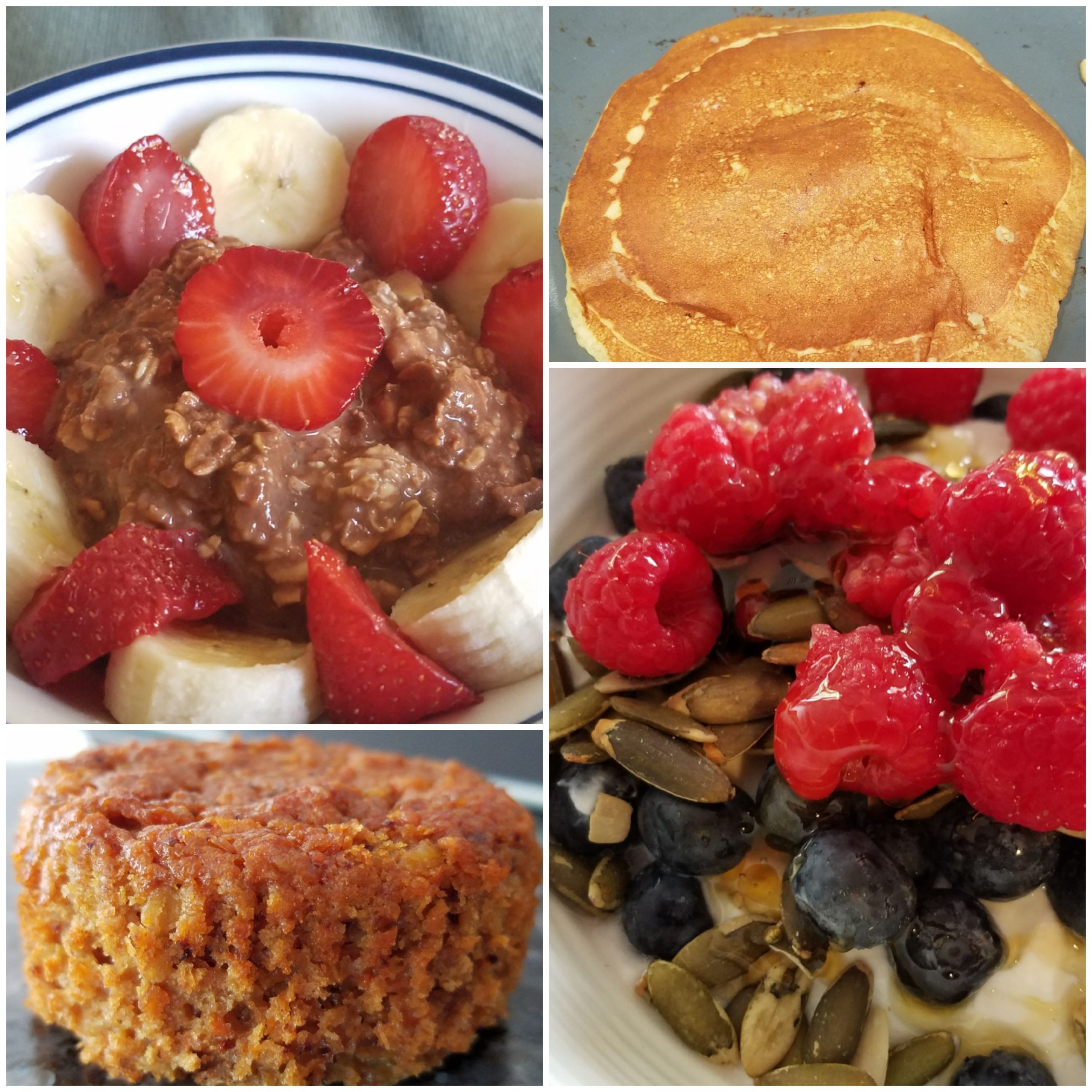The World Health Organization and the American Academy of Pediatrics recommend exclusive breastfeeding for the first 6 months of life (hang in there…!). The best time to introduce solids varies for each child according to their readiness and should be after 17 weeks (4 months) and sooner than 26 weeks (6 and a half months). Some signs that your baby is ready to try foods is when: they can hold their head up on their own; they can sit without support; their tongue thrust reflex has diminished; they show interest in your plate; they can bring a spoon to their mouth (…among other things 😊).
Why not introduce solids before 4 months or after 6 ½ months?
Before 17 weeks the digestive system is still immature to handle solids. It starts maturing after 17 weeks and is even more ready closer to 26 weeks. In addition, the American Academy of Pediatrics stresses that introducing solids before 4 months of age is associated with increased risk for childhood obesity. It is often mistakenly thought that when a baby is fussy, around 3 months of age, it is a sign to start solids to make them feel full but the recommendation is to wait, as children are not ready yet.
As mentioned, introducing solids should not be delayed after 26 weeks the basic reasons being that breastmilk or formula cannot cover the energy and other nutrient requirements such as iron and zinc, of the growing baby. Another point to consider it to ensure that the introduction of gluten containing foods such as wheat, rye, barley is done between 4 to 6 months. The European Society for Paediatric Gastroenterology Hepatology and Nutrition (ESPGHAN) recommends this as it has been found to protect against Coeliac Disease, Type 1 Diabetes and allergies.
Which recommended sequence of food introduction should I follow for my baby?
The evidence shows that the sequence generally does not matter, as long as you follow some simple guidelines. Start by giving one new food every 2 days and combine them once they have been tried individually.
One recommended sequence is to start with fruit and vegetables e.g. apple, pear, banana, zucchini, sweet potato, spinach, carrot, peas and later the sourer ones such as strawberries, orange. Boil or better steam them using little water, in order to preserve more of the vitamins and other antioxidants, and once they are soft blend them by adding some of the water they were cooked in. The consistency should be runny and increase in thickness as your baby grows. Start by giving 1-2 teaspoons at a time, it’s just trying new tastes at this point, not replacing milk.
Continue food introduction with chicken, red meat to support the baby’s iron and zinc stores. Then add gluten containing cereals before 26 weeks, such as wheat, rice, barley either cooked and blended or better as baby cereal (choose an iron fortified one with NO SUGAR OR JUICE ADDED). Avoiding added sugars in baby cereal is an important step to protect against childhood obesity.
Then follow with legumes such as lentils, fish, yogurt and nut butters. The guidelines regarding introduction of peanuts and nuts to the infant’s diet changed in 2017 and the recommendation from 2000 to wait up to 3 years of age is no longer valid. The groundbreaking study is the LEAP study (Learning Early About Peanut). This intervention study clearly showed that introducing nuts between 4 to 11 months, often and in small quantities, to babies with high risk for allergic reaction, decreased the frequency of the development of an allergy later in life! Peanut allergy was 70% less likely to develop in high risk children, by exposing children early, compared to the group that avoided nuts completely. So, the American Academy of Pediatrics guidelines state that if your baby it at zero or risk of eczema or food allergy you can do the nut introduction around 6 months along with all other foods at home. If your baby is at low risk or high risk please discuss with your pediatrician how to introduce these foods safely, again between 6 to 11 months will most likely help to avoid developing an allergy later in life (mention the LEAP study to them).
Finally, when the foods above have been introduced you can continue with egg (the yolk first) and full fat cheese in small amounts as it is high in salt.
You should wait after the first 12 months in order to introduce cow’s milk, liver, swordfish, honey, salt, sugar, sweets and after 24 months to switch to reduced fat dairy products.
When do I change the texture of the food?
It is best to start thickening the consistency and leaving small soft chunks around the age of 9 to 10 months, when few teeth have appeared and your baby can chew. If you lose this window of change in texture, it can make it much harder for your baby to handle harder textures later, eg vegetables, fruit that need more chewing.
To summarize, the sequence recommended above is based on introducing your baby early to healthy foods such as vegetables and fruit, giving meat next to enhance iron and zinc stores, on avoiding the baby cereals with added sugars and choosing the ones fortified with iron (no sugar added), and on introducing gluten and nuts in a safe manner, earlier than 6 and 11 months respectively. Also, we talked about changing consistency as the baby grows so they learn to chew and accept different textures.
If you are reading this you are probably expecting…or already have a baby so congratulations, enjoy all the happy moments to come! For further guidance or questions please contact dietrophy.
SOURCES:
- Fewtrell M et al. Complementary Feeding: A Position Paper by the European Society for Paediatric Gastroenterology, Hepatology, and Nutrition (ESPGHAN) Committee on Nutrition. J Pediatr Gastroenterol Nutr. 2017 Jan;64(1):119-132
- https://www.aap.org/en-us/advocacy-and-policy/aap-health-initiatives/HALF-Implementation-Guide/Age-Specific-Content/Pages/Infant-Food-and-Feeding.aspx
- Du Toit G Roberts G Sayre PH Bahnson HT Radulovic S Santos AF Brough HA Phippard D Basting M Feeney M Turcanu V Sever ML Gomez Lorenzo M Plaut M Lack G Randomized trial of peanut consumption in infants at risk for peanut allergy. N Engl J Med. 2015; 372: 803–81
g





